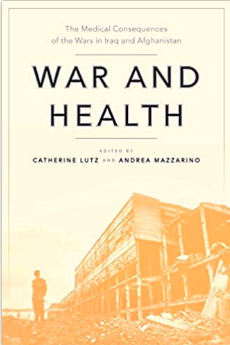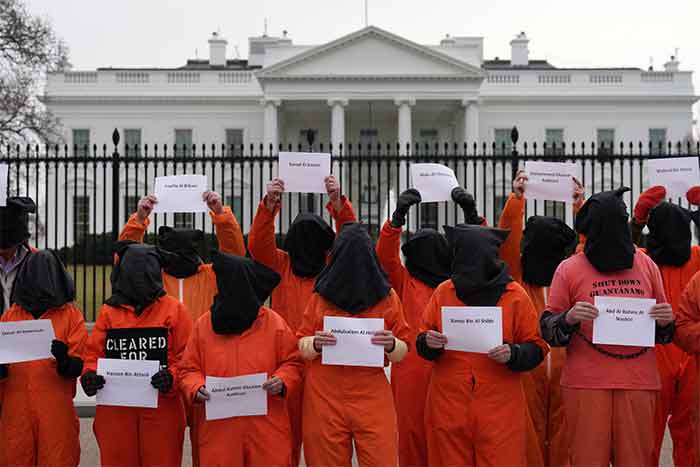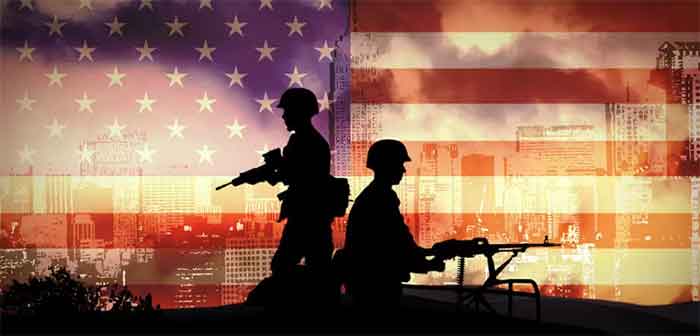
America’s War on Terror, launched in response to the September 11, 2001, attacks on the World Trade Center and the Pentagon, has had a staggering impact on our world. The Costs of War Project at Brown University, which I helped found, paints as full a picture as possible of the toll of those “forever wars” both in human lives and in dollars. The wars, we estimate, have killed nearly one million people, including close to 400,000 civilians in Afghanistan, Iraq, and Pakistan alone. Worse yet, they sickened or injured several times more than that — leading to illnesses and injuries that, we estimate, resulted in millions of non-battlefield deaths.
And don’t forget that those figures include dead and wounded Americans, too. Most of us, however, have little awareness of any of this. If you live outside the archipelago of American military bases that extends across this country and the planet — an estimated 750 of them outside the U.S. on every continent except Antarctica — it’s easy enough not to meet stressed-out military service members and their families. It’s easy enough, in fact, not to grasp just how America’s wars of this century rippled out to touch military communities.
In recent times, those bases have become ever more difficult for the public to enter and often aren’t close to the cities where so many of us live. All of this means that, if you’re a civilian, the odds are you haven’t met the grieving spouses of the soldiers who never came home or the shaken children of the ones who did, forever changed, sometimes with amputated limbs or post-traumatic stress disorder (PTSD). I’m thinking of the ones with those far-off gazes and the pain they have to deal with in their heads, their limbs, their backs.
Personally, I find it overwhelmingly hard to write about such human-shaped holes in our disturbed world. That’s probably why the Costs of War Project has a 35-person (and counting) team of journalists, physicians, social scientists, and other experts to portion out the research and the pain that goes with it as they deal with the fact that the monumental death and injury counts they’ve produced are likely to be underestimates.
As I write this, my chest tightens and my breath gets short, reminding me that some realities are impossible to contemplate without a physical reaction. And I begin to understand why so many Americans, including those not in the military — an estimated 50 million in fact! — experience chronic pain. New York Times columnist Nicholas Kristof is writing a stunning series of pieces reporting on what many in the public-health world term “diseases of despair” like depression, suicidality, and addiction. A significant portion of those Americans don’t have injuries that are detectable via X-rays, CT scans, MRIs, or the like. Often, pain is linked with major depression, other symptoms of PTSD, or anxiety. Something is happening in the minds of Americans that’s not easily traceable in the body because its causes may lie in our wider world.
The Costs of War on the Homefront
Know one thing: in the U.S., so many of us do feel the painful results of our disastrous distant wars of this century, whether we know it or not. For instance, ever more Americans attend crumbling, understaffed schools, drive on roads in disrepair, and go to hospitals and health clinics (not just Veterans Administration ones with their seemingly endless waiting lists!) that don’t have enough doctors and mental-health therapists to meet our needs. Arguably, a major culprit is the war on terror. To take just one example, we could have fully staffed and equipped our whole healthcare system and made it significantly more pandemic resilient had we spent just a fraction of the $8 trillion or more this country put out for our foreign wars.
And the sting of war on our society doesn’t end with decrepit infrastructure, but extends to civil liberties and human rights. For example, our police are armed to the teeth with military-grade weaponry and other equipment provided by an overfed Pentagon and in this century have grown more aggressive towards unarmed people here at home.
And believe me, pain from American war-making is felt elsewhere, too, often all too directly in the dozens of countries around the world where the U.S. arms and trains militaries, continues to fight counterinsurgency wars, and runs prisons and intelligence operations. There are the air strikes and shootings, the father or brother who can no longer be the breadwinner because he was collateral damage in a drone strike, the millions of displaced and malnourished people — many of them mothers with children — in countries where Washington has supported authoritarian regimes in questionable counterinsurgency wars.
Pain That Is Difficult to Trace
Given global events since those 9/11 attacks, it shouldn’t be surprising that pain is so frequently experienced by people in our military communities. Somewhere between 31% and 44% of active-duty American soldiers report chronic pain of some sort. That’s significantly higher than in the general population. And no surprise in this either: veterans are about 40% more likely to report chronic pain than non-veterans.
Chronic pain is, in fact, part of a category of neurological conditions that ranks as the fifth most common source of disability for service members treated at on-installation clinics and hospitals. Worse yet, military pain-related diagnoses have been growing. Back pain, neck pain, knee pain, migraines, and chest pain are becoming the norm.
As a military spouse and a therapist who has treated many soldiers and veterans, I’ve all too often observed how such pain, while sometimes untraceable to a visible source, is all too real — real enough, in fact, to immobilize some soldiers, or even keep them from successfully stringing together sentences. (And while I’ve seldom found that commonly recommended medication treatments truly alleviate such pain in a sustainable way, I have watched it subside over time thanks to the sorts of things that also boost mental health — talk therapy, exercise, and deepening friendships.)
Of course, military communities aren’t the only places where such pain is commonplace. It’s also experienced all too often by poor Americans without college degrees, especially women and people of color — in other words, the most vulnerable slices of our American pie.
The portraits in Kristof’s pieces reveal some surprising findings about pain. First, the amount of pain you experience depends not just on the physical injury that may show up on an X-ray or CT scan or, in the case of soldiers, the wound you got, but on what you think and feel. Two-thirds of people with depression have unexplained chronic pain, for example. Doctors have even discovered that some people reporting knee pain have no discernable anatomical problem.
By the same token, the brain has a certain ability to heal or ameliorate pain. In some cases, through the use of “mirror therapy,” people have been able to ease pain from an amputated limb or “phantom limb” by looking repeatedly at the intact one and somehow creating the impression that they’re okay.
Some people, military or not, with chronic depression, anxiety, or PTSD symptoms like exaggerated startle reflexes or sleep problems experience greater sensitivity to pain if they get physically injured again. Their brains, it turns out, have been trained by trauma to believe something’s wrong with their bodies.
Common diagnoses that have seeped into household parlance tend to reinforce this notion for many. Medical categories like fibromyalgia and irritable bowel symptom make pain sound as though it’s related to something tangible, except that all too often, it’s “just” pain.
It’s hardly a surprise anymore that the go-to treatment for pain in America is opioids, and look where that’s left us — with an epidemic of addiction and deaths to the tune of tens of thousands of lives lost yearly. Somehow, that approach to dealing with pain brings me back to the way the U.S. fought “terrorism” after the 9/11 attacks — with our own brand of terror (war!) globally and, indeed, it not only proved all too addictive but so much more costly to us and so many others on this planet than the original blow.
The Phantom Limb of American Society
If this comparison seems kind of out there to you, that’s my point. The problems experienced by Americans in pain are often all too hard to pin down, because at least in part they derive from survival guilt at having watched fellow soldiers getting blown to pieces by improvised explosive devices, or your parents dying from Covid because their jobs as janitors didn’t allow them to quarantine, or intense loneliness in a pandemic that made high school a virtual solo performance for all too many students. And get this: you don’t even need to go through one of those nightmarish scenarios personally to be in pain. Just hearing about economic insecurity in our world can exacerbate whatever aches you have.
This makes me wonder what it was like for so many to watch the recent coverage of Congress reaching the precipice over whether to raise the debt ceiling so that the government could pay its bills. How did it affect already struggling people to contemplate imminent economic catastrophe in the form of potentially soaring interest rates, inflation, job loss, and potential cutoffs in social services like healthcare? As a therapist who relies heavily on state-funded health insurance for my income and whose spouse is a soon-to-be veteran, I can’t help but scoff at congressional representatives who claim to be supporting our military by insisting on raising already astronomic Pentagon funding yet higher, while trying to gut the very systems that would let even a family as privileged as mine make ends meet once a soldier finishes his or her service.
Now look a little farther out if you want to be anxious. Most Americans don’t realize that our forever wars have been funded almost entirely by borrowing. A fundamental reason why we have to talk about a debt ceiling and continue to borrow ever more money to pay bills like those due for Medicare, Medicaid, and food stamps is war. One key reason why we need to worry at all about making college graduates start paying their exorbitant loans back again is… yes, our debts from war-making. Notice a theme here?
Of course, war means that the remedies for pain that have proven to be most effective in the long run are not as available to those who experience the most pain. Exercise, certain types of talk therapy, and community are key and yet can be all too sparsely available to those working multiple jobs and struggling to pay their bills, not to mention those being shipped from base to base amid the grinding pace of military life.
In the meantime, military families and veterans are left to pay the costs of war directly via just about every kind of stress and distress imaginable. I remember someone I knew at one military post. A person of color and a veteran of the Vietnam war, he’d often be outside his house in the early mornings and evenings, smoking weed in order to alleviate leg pain that was untraceable to any particular injury. What he did talk about frequently were his painful memories of shooting at rural, dark-skinned villagers in Vietnam who resembled his own farmworker family in the U.S. when he was growing up. Trauma and pain were his frequent travel companions and yet the source of his pain remained unidentifiable in his small, fit body.
As then-President Donald Trump had banned or suspended the entry of people from eight different majority Muslim nations (as well as other refugees) to this country, I knew life wasn’t easy for him. He was, after all, often mistaken for a Muslim, called racial slurs, and told by passersby to go back where he came from. And even so many years later, that veteran and all too many soldiers like him may still not find a healthy part of our country to look at in order to convince themselves that life indeed will be okay.
Yes, there are all too many sick parts of our land, including a shaky social safety net, the hate and violence that continue to spread, and the long lines to get anywhere near a doctor or therapist. Contemplating all of this can be like gazing at a phantom limb that still smarts, even as so many of the original injuries — from 9/11 to our disastrous military response to it — seem all too forgettable to so many of us. Sad to say, but it’s vital that we remember the costs of war not only for ourselves but for those millions of people out there who experienced the — in every sense — wounds we inflicted in the name of an injured America in our nightmarish war on terror. Otherwise, don’t be surprised if we do it again.
















































